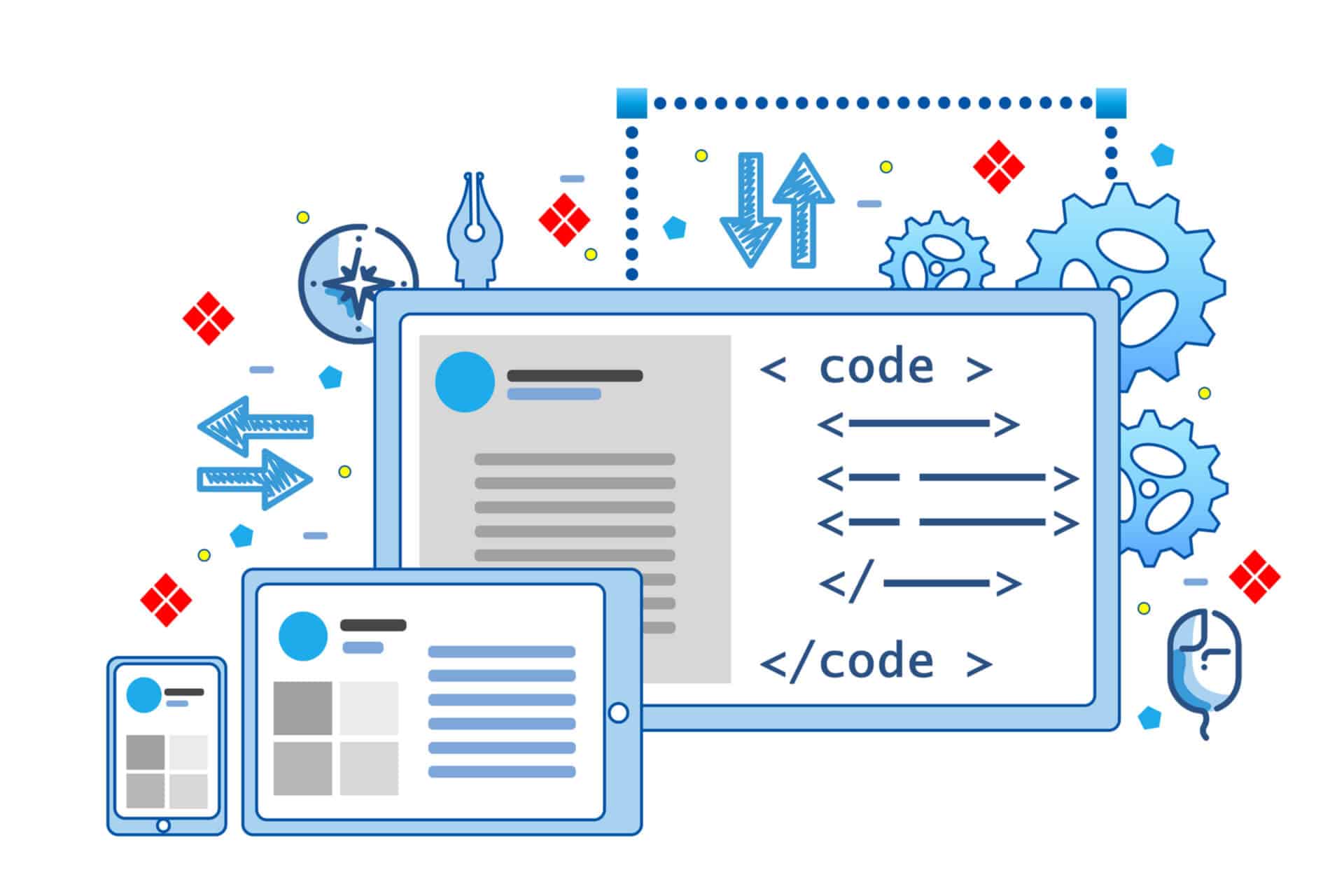Pulumi and Terraform stand out as leading tools in the infrastructure as code (IaC) landscape. They enable developers and system administrators to manage infrastructure efficiently through code-based templates and configuration files.
IaC platforms have reshaped how organizations deploy and oversee their cloud resources, offering robust capabilities via distinctive approaches. While both Pulumi and Terraform enhance deployment predictability and operational efficiency, they differ in several core aspects.
This article compares the differences and similarities between Pulumi and Terraform, helping you determine which tool best suits your needs.

What Is Pulumi?
Pulumi is a modern IaC platform that enables developers to use their preferred general-purpose programming languages to define and manage infrastructure. Unlike traditional IaC tools that use domain-specific languages, Pulumi's approach harnesses the power of JavaScript, TypeScript, Python, Go, and .NET.
This integration allows developers to apply familiar coding practices and tools to the infrastructure management process, bridging the gap between software development and operations. Furthermore, by leveraging real programming languages, Pulumi empowers teams to automate cloud infrastructure tasks more expressively and flexibly, supporting complex deployment logic and application-centric workflows.
Pulumi Key Features
Here are several features that enhance Pulumi's capability as an IaC tool:
- Multi-language support. Pulumi's support for several programming languages enables teams to write infrastructure code in languages they already know, significantly easing the learning curve.
- Real programming constructs. Pulumi enables more complex logical workflows than typical IaC tools using loops, conditionals, and other control structures. The added flexibility makes it easier to manage scenarios dynamically driven by external factors.
- Integrated testing. Pulumi supports robust testing frameworks typically used in software development. These frameworks facilitate test-driven development (TDD) and integration testing of infrastructure, which reduces bugs and increases code quality.
- Provider agnostic. Pulumi supports a broad array of cloud providers, including major platforms like AWS, Azure, and Google Cloud, offering a versatile solution for managing multi-cloud and hybrid cloud environments.
Pulumi Advantages
Using Pulumi for infrastructure management offers several significant advantages:
- Developer familiarity. By managing infrastructure in languages like Python, JavaScript, and .NET, Pulumi dramatically reduces the learning curve, integrating smoothly with existing developer skill sets. This familiarity accelerates adoption and enhances productivity as teams leverage their existing knowledge and resources.
- Powerful abstractions. Pulumi enables the creation of custom abstractions that simplify complex infrastructure setups. These abstractions encapsulate common patterns into reusable components, which can be shared across projects or teams, enhancing efficiency and maintainability.
- Integrated software lifecycle tools. Using the same tools for application and infrastructure code creates a seamless development experience. This integration helps maintain consistency across the software development lifecycle, from coding and testing to deployment.
Pulumi Disadvantages
Despite its advantages, Pulumi presents several challenges:
- Complexity for simple tasks. When infrastructure needs are simple, such as provisioning a single server or a small network configuration, using a full programming language can introduce unnecessary complexity. The complexity leads to longer development times and higher maintenance costs for straightforward tasks.
- Barrier for non-developers. Pulumi's requirement for coding skills is a significant barrier for IT professionals or operations teams not versed in programming. This requirement potentially limits its usability for those without software development experience.
- State management risks. Unlike declarative approaches, where the end state is described and managed automatically, Pulumi's imperative approach requires developers to manage state transitions explicitly. This requirement can lead to issues with deployment predictability and consistency if not carefully handled, especially in large-scale environments.
For developers seeking secure, high-performance dedicated servers, phoenixNAP's Bare Metal Cloud is the ideal choice. Furthermore, managing these powerful servers doesn’t have to be a chore.
Thanks to our seamless integration with Pulumi's, you can simplify complex configurations and easily manage your resources using familiar programming languages.
Transform your infrastructure management with phoenixNAP, and experience streamlined server deployment and management!

What Is Terraform?
Terraform is an open-source IaC tool created by HashiCorp that automates the process of managing a variety of service providers and custom in-house solutions. It allows users to define and provision data center infrastructure using a high-level configuration language known as HashiCorp Configuration Language (HCL). Terraform also supports the use of JSON as an alternative.
Terraform manages external resources (such as public and private cloud infrastructure, network appliances, software as a service, and platform as a service) with a declarative approach. The users write configuration files that define what the infrastructure should look like and Terraform ensures that the final state matches the model.
Terraform Key Features
Here are several unique features that improve Terraform's utility as an IaC tool:
- Declarative language. Terraform uses HCL to define infrastructure in a format that is both readable and writable by humans. It also allows for concise descriptions of resources that need to be managed.
- Modular design. Encapsulating resources in reusable modules enables users to reuse configurations, streamlining and standardizing infrastructure deployments across the board.
- Plan and apply workflow. Terraform provides a predictable 'plan' step before any 'apply' operations, giving users a preview of the changes that will be made to their infrastructure. This feature enhances trust and reliability in deployment processes.
- Extensive provider support. With support for hundreds of providers of various services and technologies, Terraform can manage nearly any infrastructure type, making it highly adaptable to both new and legacy systems.
Terraform Advantages
Terraform's declarative model and tooling offer several key advantages:
- Predictability. Terraform's approach, where the infrastructure's desired state is defined upfront, ensures that operations are idempotent (running the same set of configurations multiple times produces the same result). This predictability minimizes deployment errors and achieves consistent development, staging, and production environments.
- Reusability. Terraform's modular design allows configurations to be packaged into modules that can be reused across different projects or shared with the community. Reusability speeds up project setups and ensures that best practices are adhered to across all infrastructure deployments.
- Community and ecosystem. Terraform has one of the largest communities in the IaC space. It benefits from a wide range of plugins, extensive documentation, and a plethora of modules contributed by users worldwide. This ecosystem enriches Terraform's capabilities and provides users with a robust support network for troubleshooting.
Terraform Disadvantages
Terraform has several notable limitations:
- Limited scope for dynamic configurations. Because Terraform uses a declarative model, it can sometimes struggle with highly dynamic configurations where the infrastructure must quickly adapt to changing conditions.
- Learning curve. Learning HCL, despite its readability, is challenging for new users, especially those unfamiliar with declarative programming paradigms or specific syntaxes.
- Disruptive upgrades. Upgrading Terraform, particularly between major versions, introduces breaking changes that may require significant effort to address. These changes can affect existing workflows and require migrations or updates to state files, potentially disrupting ongoing operations.
Our tutorial on how to provision infrastructure with Terraform provides a step-by-step guide on using Terraform effectively. Featuring phoenixNAP’s Bare Metal Cloud, the article demonstrates the practical application of Terraform’s capabilities in real-world scenarios.

Pulumi vs. Terraform
Here is a table comparing the features of Pulumi and Terraform.
| Pulumi | Terraform | |
| Language | Supports general programming languages, enhancing flexibility and application development integration. | Utilizes HCL, which is specifically designed for IaC. |
| Plugins | Adapts quickly to new technologies with a growing plugin ecosystem, ideal for evolving tech environments. | Offers a broad selection of stable plugins, ensuring wide-ranging support and reliability. |
| Integrated development environment (IDE) support | Provides extensive IDE compatibility based on the programming language, including advanced features. | Features specialized IDE plugins for HCL that streamline development with syntax highlighting and error checking. |
| State management | Offers managed services with automatic features or flexible self-managed configurations. | Uses either local or cloud-based backends, incorporating state locking and versioning for enhanced collaboration. |
| State encryption | Automatically encrypts state data at rest in Pulumi Service, with options for custom setups. | Supports both manual and automatic encryption setups, including automatic encryption in Terraform Cloud. |
| Community and ecosystem | Has a dynamic, rapidly evolving community that drives innovation and tool capabilities. | Features a large, well-established community that provides robust support and extensive resources. |
| Execution model | Uses an imperative approach, allowing explicit management of state and logic for complex configurations. | Employs a declarative approach, focusing on the end state to simplify management and minimize errors. |
| CI/CD integration | Integrates seamlessly with CI/CD tools using standard programming practices. | Offers strong CI/CD support with dedicated tools and processes for predictable infrastructure automation. |
| Cost management | Integrates with third-party tools for proactive cost forecasting and management. | Features built-in cost estimation tools in its Cloud and Enterprise solutions to effectively manage budgets. |
Our latest article breaks down the differences and synergies between Terraform and Kubernetes. Whether you're deciding which tool fits your project's needs or looking to understand how they can work together, this comparison provides the insights you need.

Feature Comparison between Pulumi and Terraform
To help you understand each platform's unique advantages and capabilities, here is a detailed feature comparison:
Language Integration
The programming languages supported by an IaC tool significantly influence adoption, developer productivity, and the integration of infrastructure management with broader IT workflows.
- Pulumi integrates directly with mainstream programming languages like Python, JavaScript, TypeScript, Go, and .NET. This capability allows developers to leverage existing code libraries, follow programming paradigms they are familiar with, and use object-oriented or functional programming techniques to manage infrastructure.
- Terraform uses HCL, a declarative language tailored for describing infrastructure. While HCL simplifies the declaration of what resources are needed, it limits how operational logic can be expressed, focusing instead on the end state of the infrastructure setup.
Plugin Ecosystem
The extent and vitality of a tool's plugin ecosystem determine its flexibility and the breadth of its integration with third-party services and platforms.
- Pulumi features a responsive plugin ecosystem that quickly integrates advancements in cloud services, making it ideal for teams needing to stay on the cutting edge of technology.
- Terraform has a well-established plugin system supported by a large community. This system covers many services and platforms, ensuring reliable integration across diverse IT environments.
IDE Support
The level of integrated development environment support impacts developers' efficiency and comfort with writing and managing code. This, in turn, directly affects development speed and bug frequency.
- Pulumi works seamlessly with any IDE that supports its host languages, offering developers the full range of features like debugging, linting, and code completion they are accustomed to when developing applications.
- Terraform provides specialized IDE plugins, which enhance HCL's usability by offering syntax highlighting, error checking, and code completion tailored to infrastructure coding.
Choosing the right IDE will dramatically enhance your coding efficiency and project management.
Our articles on the top Java IDEs and Python IDEs highlight key features, usability, and integration capabilities. Whether you’re a seasoned developer or just starting, we will help you select the perfect IDE for your programming needs.
State Management
State management refers to how IaC tools track and manage the ever-changing infrastructure resources you define in your code. Robust state management is crucial for tracking infrastructure deployments and ensuring operations are performed atomically and safely in multi-user environments.
- Pulumi allows users to choose between managing their state files manually or using Pulumi's managed services, which provide benefits like state locking, access controls, and history tracking, enhancing collaboration and security.
- Terraform relies on a consistent and predictable state management system that supports various backend storage options, including cloud-based solutions, which provide scalability and collaboration capabilities.
State Encryption
State files hold essential and sensitive details about your infrastructure configuration. Encrypting them is critical for security because if someone gains access to an unencrypted state file, they could compromise your infrastructure.
- Pulumi automatically encrypts state data at rest when using its managed service, removing the need for users to handle encryption themselves.
- Terraform offers manual encryption configurations and supports automatic encryption using Terraform Cloud, which aligns with best practices for data security.
Community and Ecosystem
A vibrant and supportive community accelerates problem-solving and feature development, enhancing user satisfaction and platform robustness.
- Pulumi has a growing community that actively contributes to its development. The community is driven by its open-source nature and the use of popular programming languages that attract a wide range of developers.
- Terraform benefits from a large, established community that continually adds to the treasure trove of plugins, shared configurations, and best practices, helping new users integrate the tool into their workflows efficiently.
Execution Model
The execution model adopted by an IaC tool affects how intuitively it aligns with the infrastructure lifecycle and operational workflows.
- Pulumi employs an imperative approach, giving developers more control over the execution logic and the ability to use conditional flows and loops to dynamically configure resources based on runtime data.
- Terraform uses a declarative model, specifying what the infrastructure should look like without detailing the steps to achieve it. This approach reduces complexity and enhances predictability but may limit dynamic configurations.
Continuous Integration/Continuous Deployment (CI/CD) Integration
Effective CI/CD integration is key to automating and streamlining the deployment and management of infrastructure alongside application code.
- Pulumi integrates naturally into existing CI/CD pipelines for application development, leveraging the same tools and environments to manage infrastructure updates.
- Terraform also integrates well with CI/CD systems, offering dedicated tools and practices that ensure infrastructure changes are made reliably and repeatably within automated workflows.
Continuous processes are vital to DevOps and Agile development. Read our article to understand the vital difference between continuous delivery, deployment, and integration.
Cost Management
Cost management features help organizations forecast spending and manage financial resources effectively as they scale their infrastructure.
- Pulumi can integrate with third-party cost estimation tools, offering insights into potential costs during the planning phase, though it requires additional setup.
- Terraform includes native cost estimation tools within Terraform Cloud and Enterprise. These tools provide detailed projections of infrastructure costs before resources are provisioned, aiding in budgeting and financial decision-making.
Is your IT budget under pressure? Our guide on IT cost reduction offers strategies to help you save on your technology infrastructure.

Selecting the Right Infrastructure as Code Tool
Choosing the right IaC tool depends on your organization's requirements and workflows. Pulumi is advantageous for teams with a strong background in standard programming languages, as it integrates seamlessly with application development, streamlining processes and reducing the learning curve.
On the other hand, Terraform is ideal for environments that prioritize stability, scalability, and predictability in infrastructure management. Supported by a robust community, Terraform's mature ecosystem and the simplicity of its configuration language offers reliable and efficient management. For these reasons, it is especially suitable for large-scale enterprises that require dependable third-party integrations.
In summary, both Pulumi and Terraform offer significant benefits for infrastructure management. Your choice should be guided by the tool's technical strengths and how well they mesh with the operational and cultural dynamics of your teams. Aligning the tool with your strategic objectives and team capabilities will maximize productivity and ensure effective integration into your IT operations.



